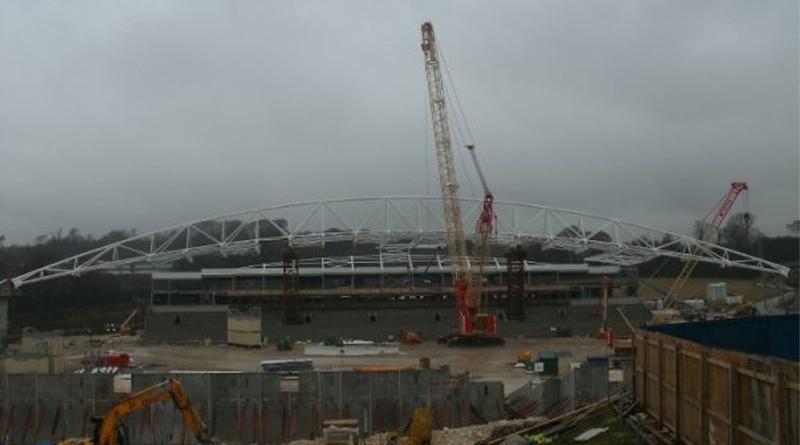Building the Amex: February 23rd 2010
Tuesday February 23rd was a landmark day in the construction of Gus Poyet’s Brighton side. The Albion went to promotion chasing Charlton Athletic and won 2-1 at the Valley. It was also a landmark day in the building of the Amex Stadium as the East Stand arch had been raised into place.
The WeAreBrighton.com team were there for both. The evening was spent in something of a state of shock as relegation-threatened Brighton beat a Charlton side who were fighting for a top two finish in League One.
Inigo Calderon and Elliott Bennett scored that night, ending a run of eight games without a victory. The result sparked an astonishing improvement in the Albion, kick starting a rise from the bottom four into the safety of mid table – a rise which famously continued the following season when Poyet led Brighton to the title.
And speaking of rises, before heading to the Valley we’d popped along to the site of the Amex to see for the first time the completed building of the East Stand arch.
Rumours had been abounding for weeks that the arch was going to be lifted into place soon. Our previous visit to this muddy corner of Falmer had come on February 17th when parts of the arch were beginning to be put into place. By the time we returned six days later, there she was in all her glory.
This was the first time that you got a sense of how big the stadium was actually going to be. We viewed the arch from the bridge over the A27, Bennett’s Field, an open gate into the building site car park and we even climbed onto the roof of a University of Brighton building behind what would become the Amex Stadium’s West Stand for a better vantage point. As you do.
The arch wasn’t the only noticeable development in the construction process. The East Stand itself was now a proper shell with the structure almost complete.
The South Stand was heading in the same direction with all the ironwork in place. And the building of the West Stand was beginning to take off too, a double edged sword if you like as although the biggest and most impressive part of the stadium, it would also mean blocking off the view into the construction site that many Albion fans – ourselves included – had become obsessed by.
We left Falmer bound for South London that day with a real sense of just what a stunning home the Albion were building at the feet of the Downs.
10 hours later and it was hard not to feel that Poyet was undertaking an equally impressive task on the pitch. Being a Brighton fan hadn’t been this exciting in a long, long time.





